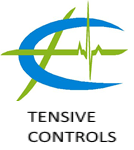
oral, drugable” peptides:
Kenneth Gruber
CEO, Tensive Controls
Peptides have limited utility as drugs due to their lack of oral activity and short half-life. However, there are reports of biologically active peptides with blood-brain-barrier (BBB) transport and/or oral activity inconsistent with Lipinski’s “Rule of 5.” Using a bioinformatics approach to examine these peptides, we developed a platform technology that produces “drugable” peptides: orally active, able to cross the BBB, with extended circulating half-life, yet easily excreted. Our technique utilizes cyclization to a defined secondary structure, in combination with a sequence-specific C-terminus, suggesting a specific transport mechanism. For “proof of concept,” we successfully applied our platform to two peptide classes: 1) antimicrobial peptides (AMPs) derived from the innate immune system, and 2) melanocortins (MCs). We produced a series of drugable AMPs that expressed both bactericidal and bacteriostatic activities. These AMPs had several different, yet complementary, pharmacophore sequences; allowing their combination into a consensus candidate. In addition, our platform’s peptides can be used as a “vehicle” to "transport" other biologically active peptide sequences; by producing a hybrid peptide drug. Using this approach, we are developing an orally active anti-biofilm-AMP therapeutic. Finally, we produced an orally active MC antagonist peptide that crosses the BBB. This MC drug has proven efficacious in three forms of small animal cachexia; the lean body mass wasting syndrome produced by many chronic diseases, including cancer. Our drug is currently being evaluated in an FDA canine cancer cachexia clinical trial. (Supported by National Cancer Institute and USDA SBIR Grants)